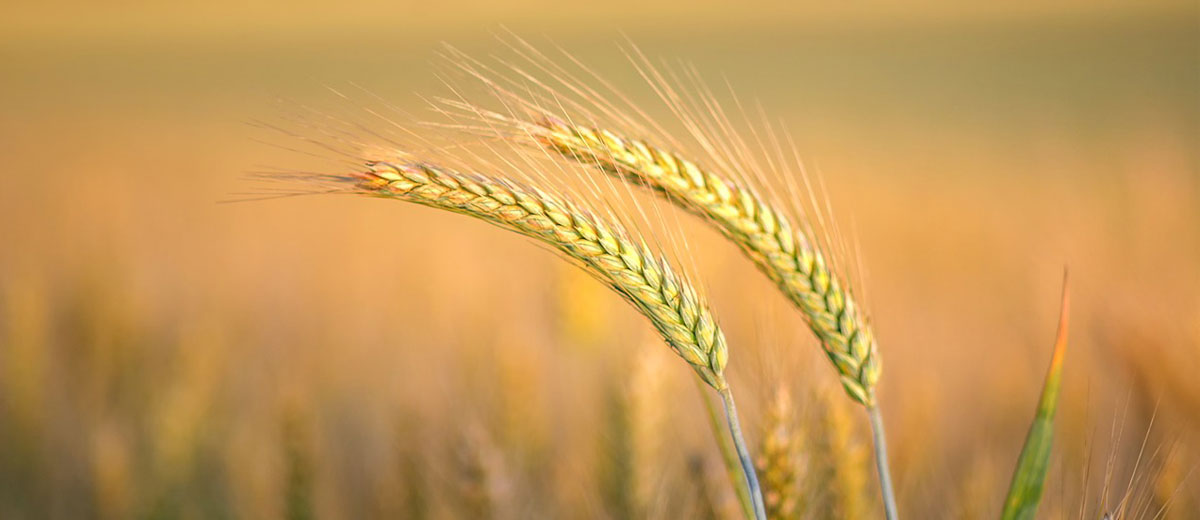
Should You Chop?
Source: Catherine Lang, AAg, Livestock and Feed Extension Specialist, Moose Jaw, August 10, 2020
Knowing the best time to cut your cereal crops for livestock feed can set you up for winter feeding success. According to a Western Beef Development Centre study from 2016, winter feeding costs account for more than two-thirds of the total costs associated with beef cow-calf production in Western Canada. The time that cereal crops are harvested directly impacts the quality and quantity of the forage. Considering the two “Ms”, moisture and maturity, can help to determine the best time to cut.
Maturity:
There are several common cereals used for swath grazing, green feed or silage: barley, oats, wheat, fall rye, triticale or a combination of the five. The best time to cut silage, swath grazing or green feed is when digestibility (forage quality) will be maximized, without excessively reducing yield (forage quantity). Often this is at the soft dough staging. As the plant matures and sets seed the energy of the forage will increase as the kernels mature, but the digestibility of the forage will decrease as the stem material becomes coarser.
Digestibility of the feed is correlated with the fibre content. Fibre can be categorized into Acid Detergent Fibre and Neutral Detergent Fibre (NDF). As the plant matures, NDF increases as the plant stalk grows taller and lignifies, reducing the amount of leaf material available relative to stem. When considering animal nutrition, the NDF plays an important role in forage quality as it determines what the animal will voluntarily consume. Neutral Detergent Fibre is slowly digested and thus controls intake by making the animal feel full. When cutting cereals, it’s important to aim for lower NDF contents so that the NDF is not restricting how much they can consume. Forcing cattle to eat very mature forages that have a high NDF content can result in reduced gains or impaction. Additionally, as a result of fibre increasing with maturity, protein content will often decrease. Cutting forages too late can result in a supplement being required to address the lower protein and high fibre content of the forage.
However, new research at the University of Saskatchewan suggests that producers can benefit from letting their swath grazing crops become more mature. In this trial, barley, oats and triticale were cut at two different stages. Triticale and barley were harvested at either soft or hard dough, while oats were harvested at late milk or hard dough. This trial found that when the plants were cut at the later maturity, the grazing days, energy or total digestible nutrients, (TDN), dry matter yield and dry matter intake all increased without causing significant reductions in digestibility. However, the protein content of the forages did decrease significantly. Waiting for the hard dough stage to cut the crop may be an option to increase yield and reduce winter feeding costs, but this is reliant on weather conditions at cutting time.
Moisture:
Moisture plays an important role when making silage, green feed, or using the forage for swath grazing. In silage, moisture contributes to the packing density of the forage to remove oxygen for fermentation, which allows silage to last without spoiling. Pit silage should have a moisture content around 65 per cent, while baled silage should be around 50 per cent. Moisture content is one of the easiest ways to determine if your crop is at the right stage to silage. A simple moisture test can be done by collecting a representative sample (10-15 plants) and using a microwave test to determine the moisture content. Achieving the targeted moisture content is an easy way to ensure you produce the best silage possible.
For green feed and swath grazing, high moisture can have negative impacts. The optimum bale moisture content for large, hard core round bales is 15 per cent; anything higher will put you at risk for the bale to heat and spoil. Bales between the 16-20 per cent moisture range may mold, which impacts forage palatability. Some molds also produce mycotoxins which can be detrimental to your animal’s health. Additionally, baling at high moisture increases heating in bales, which reduces protein content, caused by the Maillard reaction or carmelization and can result in fires.
Balancing the moisture and maturity of the cereal crops will impact the quality of your winter feed. As always, it is important to feed test to know the nutritional breakdown of your feeds. Keeping an eye on these two factors as well as watching the weather can help you stage the crops appropriately to result in the best possible feed. For more information on timing for cutting forage crops, feed testing or any other livestock related questions, please contact your local livestock and feed extension specialist or call the Agriculture Knowledge Centre at 1-866-457-2377.
For the latest information and for more updates on everything Kindersley ‘Like’ the Kindersley Social Facebook page below…








































